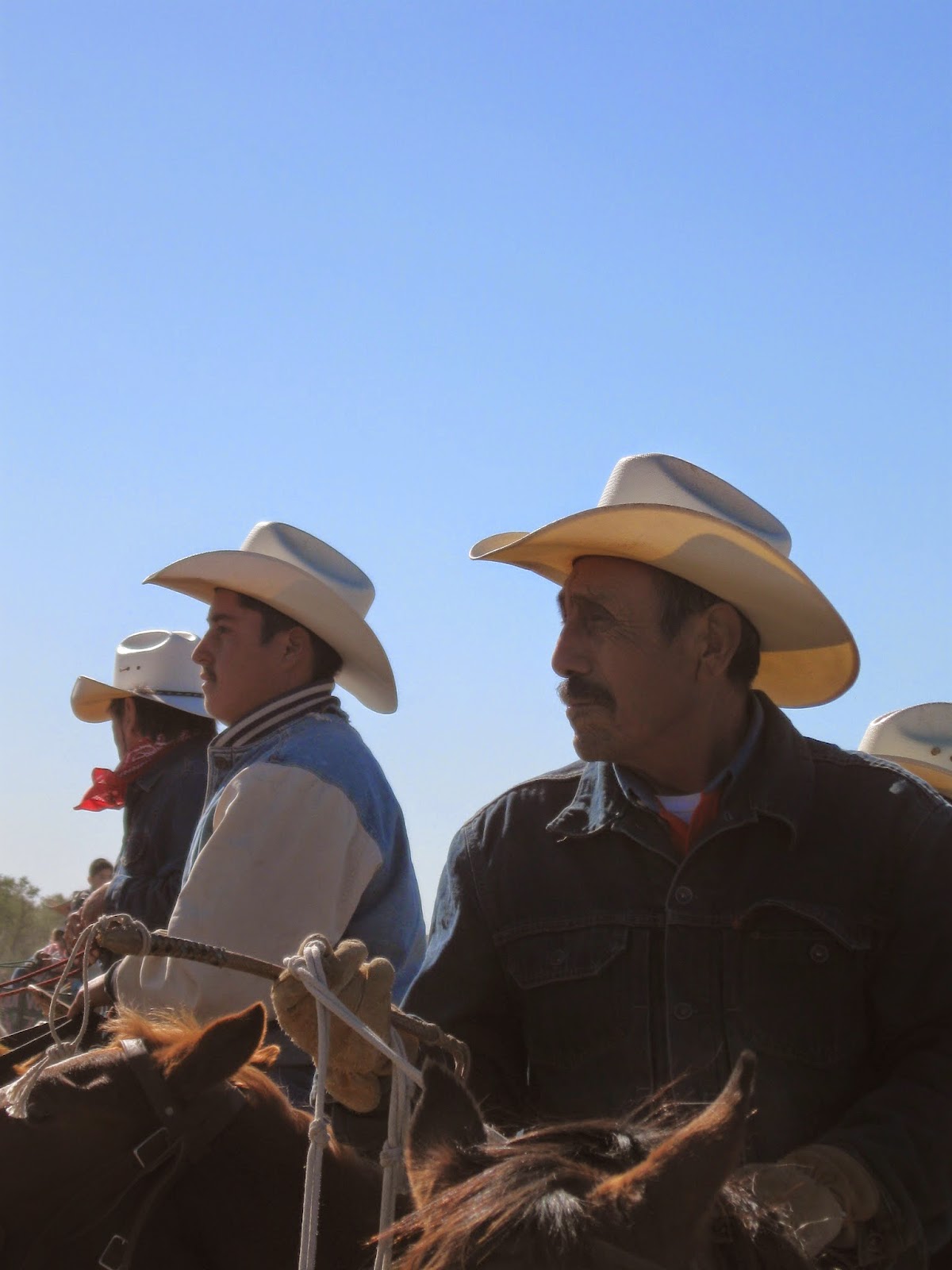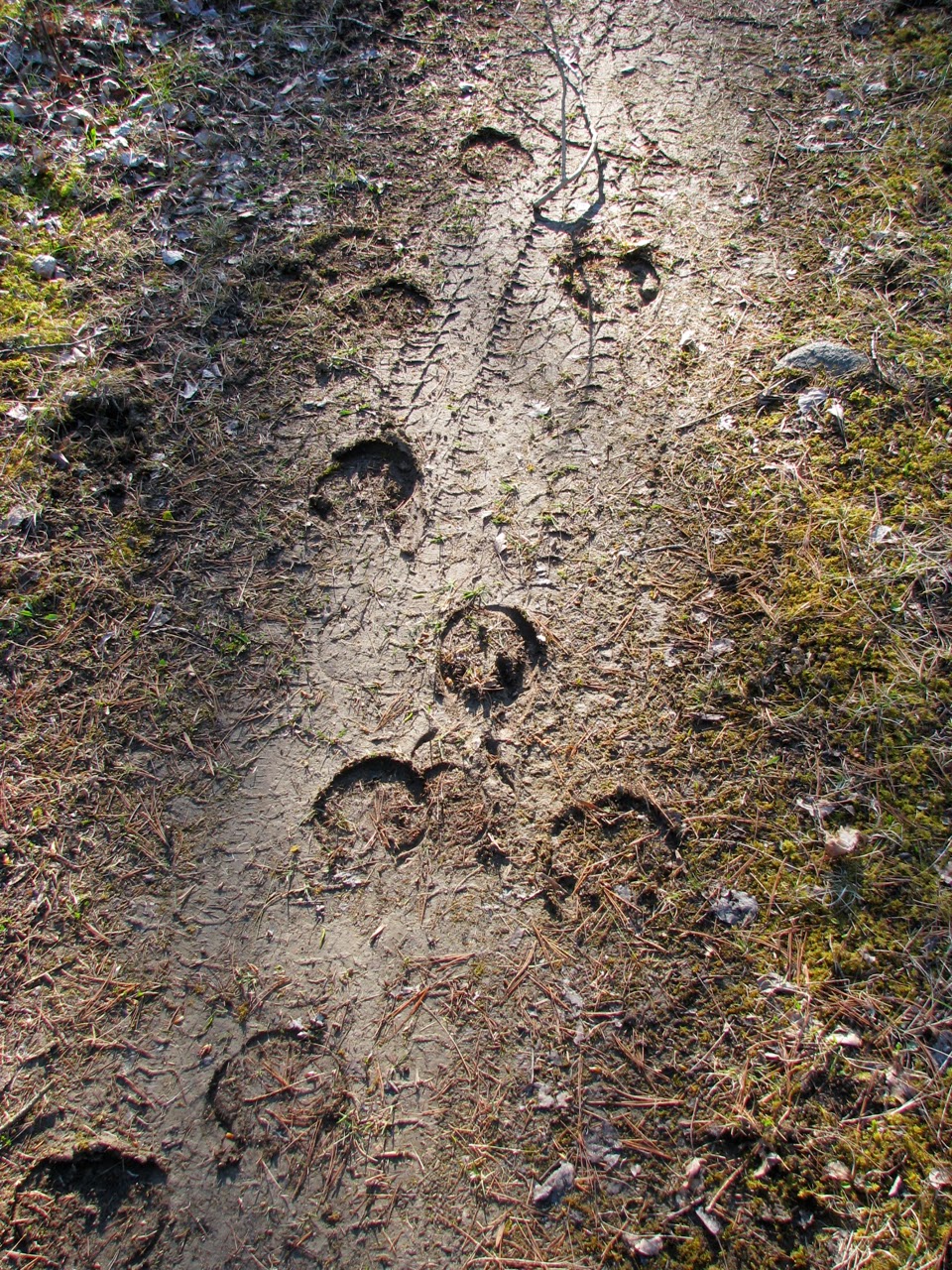I apologize for this being so long, but I didn’t want to do a two-parter and make you wait a month for Part 2. Two of the photos have nothing to do directly with tracking; I just wanted to honor two friends who taught me a great deal about the skill.
We’ve all seen trackers in movies and novels, whether an experienced trail-wise cowpoke or a sage Indian scout. They’re typically depicted prodding along on their house leaning over to locate their quarry’s tracks. This works if distinctive tracks are left on impressible ground. When tracks are indistinct the tracker needs to be afoot to effectively detect what sign he can.
What is laughable is when the tracker is mounted and is tracking at night by torchlight. It is virtually impossible to detect sign by this means other than the most obvious, and most aren’t that obvious, especially at night. Besides dim inconsistent light, the flames are flickering and creating constantly moving shadows and made worse because the torch is moving too. If there is more than one torch, each creates another set of moving shadows which are crisscrossing each other. Steady shadows cast by the sun in daylight greatly aid in detecting sign. It’s a simple rule, you don’t track at night—except though snow are they’re dragging a log behind them.
Giang Chu (aka "Ringo") taught me really serious tracking skills.
I learned some basic tracking skills in the Boy Scouts many many moons ago. I learned more from Cambodian mercenaries and Montagnard tribesmen in Vietnam. Believe me, tracking in a jungle or a dense American forest (it’s about the same) is a challenge. I picked up some additional tracking skills at the British and German-run International Long-Range Reconnaissance Patrol School in Germany—I can tell you all about Russian and Warsaw Pact boot sole patterns.
Armando Castillo Medina of Rancho el Consuelo, one of the best trackers I've known.
Where I really learned tracking was in Mexico on my wife’s family’s ranch from the vaqueros. I think they can track a field mouse. My daughter learned from them as well. There was once a puma snatching calves on the ranch. Put-out by its marauding on her rangeland where she reigned as queen of the campo, she loaded up her horse and tracked the cat for three days before baiting it and shooting it at 30 feet. Anyway, that’s another story.
A tracker adds color to a story and of course is essential if in pursuit of the bad guys. In The Hardest Ride I made Bud, the protag, an accomplished tracker taught by an old vaquero in much the same manner I was taught by a wise vaquero—tracking kids we sent out and then tracking critters of different flavors, by foot and horse.
Okay, so what’s “sign?” Anything the trackee leaves behind. Some call it “spore.” Mostly this is footprints or hoof prints or paw prints or talons (okay, let’s not go there); scuffs, broken twigs, disturbed pebbles, cigarette butts, piss marks, and so on.
The best time of day to track is morning and late afternoon when the sun is lower to better highlight the ridges and irregularities of prints with shadows. Back to torches. Tracking at night on a horse with a torch held high, its flickering notwithstanding, does not provide the necessary low angle slat of light. In daylight the tracker walks or rides on the opposite side of the trail from the sun so the shadows in the tracks are better defined. Of course the sun may be behind or ahead of the tracker. Before setting out the tracker views the tracks from different perspectives to determine which side offers the most definition.
One can track from a horse if the sign is distinct, but if indistinct and the sun is low it better on foot. For one thing, if high on a horse you are looking more vertically down on the tracks and the low angled sun’s shadows are not so noticeable.
A tracker does not watch for sign looking down at his feet. He looks 10-30 feet ahead depending on the distance he can effectively make out sign. That distance of course changes as terrain and vegetation changes. He can also occasionally glace further ahead for sign. This way if he sees sign further on he can move along faster as it’s unnecessary to detect every track. Peering ahead may also show considerable sign when the trail passes through brush, saplings, weeds, low grass, and so on. It may be bent, pressed down, and generally disturbed. Sunlight will further highlight the differences from surrounding vegetation. Turned or bent leaves and trampled grass can reveal their undersides and this prominently stands out as the color and texture are different.
Tracking in the early morning takes advantage of dew on the ground and vegetation. If the quarry was moving at night or earlier in the morning, it will leave a distinctive trail, unless beneath dense trees.
Speed. Boot and hoof prints at a walking pace are fairly even. A man or horse moving faster makes a deeper impression at the tow and the prints are further apart. A large or heavily loaded man may cause deeper heel impressions.
One horse at a walk, the other at a run on a slightly damp road.
About horse prints. I’ll provide an excerpt for The Hardest Ride’s sequel, Ride Harder, a WIP. Bud and his party returning the DeWitt Ranch are overtaking an Army convoy.
“I busied myself watching the tracks the Army convoy left. I watch tracks by habit to keep in good form. Can’t let these eyes get out of the habit of looking for the uncommon things. Things that’s always there, but you might not see them if your eyes aren’t taught to look. Gave me something to do while bouncing down a trail.
I figured the mule teams were two for each of the four wagons and seven riders. Down the road a piece a bunch of riders had come in on a side trail through the mesquite from the right, from the Rio Grande. I backtracked a little and figured they were six, well mounted and traveling heavy. But there were two mules with them making light tracks. They weren’t pack mules. I could tell because they over-stepped the horses and wagon tracks and weren’t side-by-side like the teamed mules.
Some will tell you that mule and horse tracks are the same, but they’re not. Mules have a more oval track and the hind hoof steps right in the fore hoof’s print. Horse’s hoofs don’t or might over-step them just a bit.
These horses and mules were moving at a faster pace than the Army horses. Their toes were dug in more with longer strides between the fore and hind roofs. That seemed strange. Most folks keep a steady walk when traveling any distance. Something didn’t feel, or look right.”
There’s other things besides prints and disturbed vegetation that can tip off a tracker. We were tracking a VC squad once and would have missed their camp site except we found several pissmarks off the trail to the right. Just beyond this we found where they’d slept, nine disturbed areas where they had tramped down vegetation and grass to sling their hammocks. They had started moving before light in a different direction and we easily found their trail in the turned layers of dead leaves further highlighted by dew.
Horse poop of course is another sign. Yeah, some claim they can tell how old it is by crumbing it, but when it 98°F the poop isn’t going to be the same temperature when its 32°F and both samples are two hours old. You can roughly tell how old a burned out fire is, but that takes lots of practice.
Excellent places to detect sign are on stream banks, gullies—even very small ones, ditches, and fallen trees the trackee crossed over. Man or horse can’t help but leave scuff marks, gouges, dislodged pebbles and rocks. They leave bark scuffs and dirt on fallen trees. Dislodged pebbles, even tiny ones; and this applies to level ground as well, will reveal little pits and the part of the pebbles that were below ground are usually darker than the exposed portion.
You can also find where a man’s climbed over a barbed wire fence as sand and dirt will stick to the strands, if he actually climbed it. Spreading stands and ducking through will not leave sand on the wire, but you can sometimes see drooping wire or trodden down weeds and brush growing along the fence line at the point of passage.
Okay, that’s just the basics. There’s much more to it, a lot of other technics, like how to pick up a trail that you’ve lost. The key to a good tracker is an eye for detecting something different and an eye for detail. And just as importantly, patience.
A comment on one last thing you see in movies. When you drag a leafy limb behind you or sweep your trail, to even a novice tracker, it looks remarkably like someone had swept the trail with a leafy limb.





Well said, Gordo. NIce to e-meet fellow tracker.
ReplyDeleteMarc
Thanks. Interesting.
ReplyDeleteLove it. Thanks, Gordon.
ReplyDeleteI thought I had great man-tracking skills in my early twenties but, judging by my quarry, I was on the entirely wrong trail. Oh, well. I got a little better at it as years as went on. :D
ReplyDeleteBut, seriously, folks...
I was a volunteer naturalist and know way more about animal scat than my family is comfortable with. I would LOVE to take tracking lessons one of these days. Let us know when your semester starts.
Fascinating. Thank you for sharing your expertise. Doris
ReplyDeleteGlad the article's of use.
DeleteThanks, Gordo, a great mini-manual on the ABCs of tracking.
ReplyDeletethanks the info == solusi pasutri
ReplyDeleteGreat post! But of course, it just raises more questions. What about those old movies where the escaped prisoners are moving through the stream to confuse the dogs—who are tracking them by scent in the middle of the night?
ReplyDeleteIts very difficult to lose dogs, even in a stream, but following a stream will quickly tire dogs and more importantly, tire the handler.
ReplyDelete